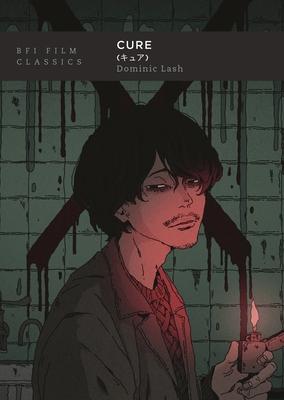Kiyoshi Kurosawa's 1997 psychological horror, Cure, follows a detective (played by Koji Yakusho) as he investigates a string of gruesome murders in Tokyo, where each victim has an 'X' carved into their neck.
Dominic Lash provides an in-depth analysis of Cure's themes, generic conventions, cinematography, editing, mise-en-scne, sound, and legacy. In examining the film's aesthetics he highlights the unique way in which it balances meticulous precision with a persistent and purposeful ambiguity. Lash goes on to situate Cure within its various contexts; firstly, as Kurosawa's 'breakthrough' film following a decade of mostly straight-to-video work and then its position in relation to the J-Horror boom of the late 1990s and early 2000s. Through a close reading of Cure's key scenes, particularly its final scene, Lash analyses the motivations behind Kurosawa's resistance to a definitive resolution. He argues that, just like its hypnotist antagonist, Mamiya, Cure unsettles some of our basic psychological assumptions. In doing so, he attempts to understand what it is about the film that lingers so disturbingly, long after the credits have rolled.
Unfortunately this title is no longer available
Kiyoshi Kurosawa's 1997 psychological horror, Cure, follows a detective (played by Koji Yakusho) as he investigates a string of gruesome murders in Tokyo, where each victim has an 'X' carved into their neck.
Dominic Lash provides an in-depth analysis of Cure's themes, generic conventions, cinematography, editing, mise-en-scne, sound, and legacy. In examining the film's aesthetics he highlights the unique way in which it balances meticulous precision with a persistent and purposeful ambiguity. Lash goes on to situate Cure within its various contexts; firstly, as Kurosawa's 'breakthrough' film following a decade of mostly straight-to-video work and then its position in relation to the J-Horror boom of the late 1990s and early 2000s. Through a close reading of Cure's key scenes, particularly its final scene, Lash analyses the motivations behind Kurosawa's resistance to a definitive resolution. He argues that, just like its hypnotist antagonist, Mamiya, Cure unsettles some of our basic psychological assumptions. In doing so, he attempts to understand what it is about the film that lingers so disturbingly, long after the credits have rolled.Paperback
$17.95